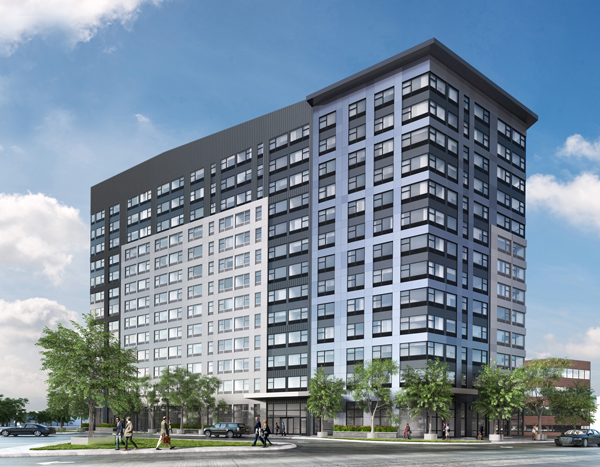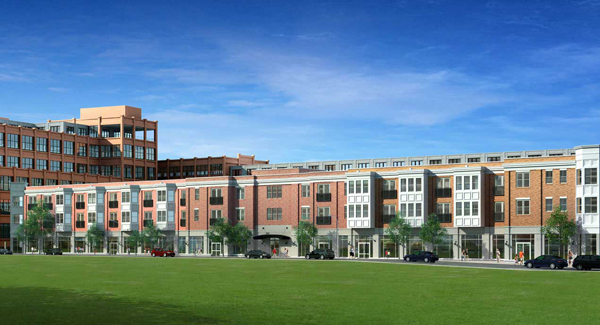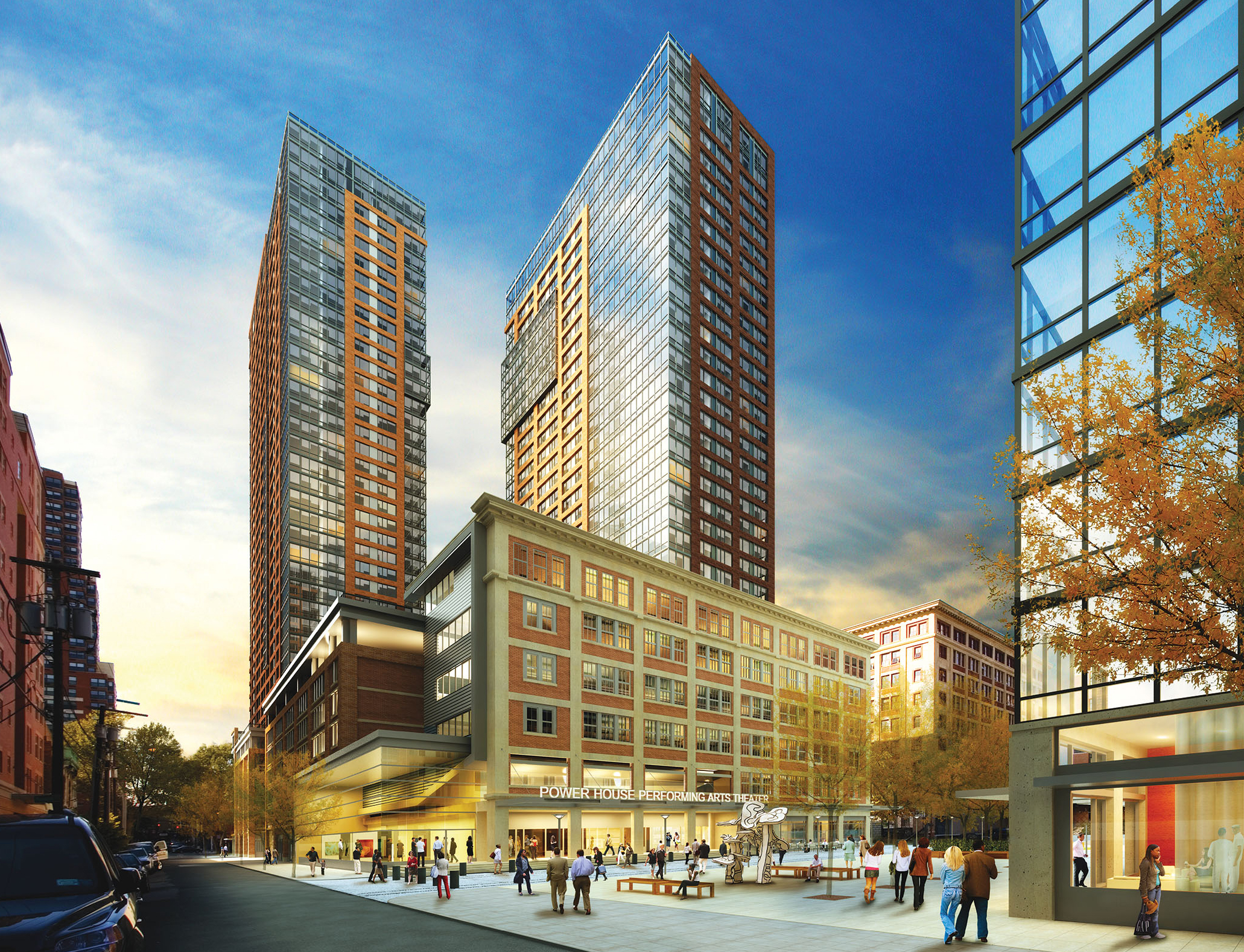Trending
Survival of the fittest
Building in the Garden State is a challenge even for the state’s most active developers

It’s not just any old developer who can hack it New Jersey. The conditions are challenging even during boom times, with a scarcity of land and scads of competing firms vying to create the most buzzworthy projects. As the market shifts and financiers become even more conservative in their lending, it’s only the most established local brands — along with some national heavy hitters — that are moving forward with new projects .
In the last year, the state’s 15 busiest builders were approved to build 3,982 apartments, according to an analysis by The Real Deal. The top developers were ranked by the number of permitted units greenlighted from April 2016 to March 2017. TRD used data from the New Jersey Department of Community Affairs and news reports to compile the ranking. Both rental and condominium units were included, though most were rentals. Major New Jersey developers that don’t appear on the list, like Kushner Companies, may have proposed projects in the pipeline, but building permit applications that were not yet approved were not counted in this analysis.
Despite the success of developers like Hartz Mountain Industries, which sits at the top of TRD’s ranking with 705 units permitted, New Jersey has generally become a difficult place to build, industry insiders said.
For starters, the lending environment has tightened, making it hard for all but the most established developers to get construction loans, sources say. Loans must now be underwritten with a larger share of equity than in past years, which favors deep-pocketed — or well-connected — builders. However, even the heavy hitters rely on public money via tax breaks, which the state seems relatively willing to grant, but only if a project promises to improve beleaguered city centers.
In addition to the tough lending environment, some perennial culprits are also curbing development, analysts said. Lots are scarce and zoning rules can be tough, especially in communities looking to restrict apartments because they might attract undesirable low-income residents, sources say.
On the flip side, smaller developers can’t always figure out how to make a profit while including the affordable housing that some municipalities require.
The obstacles to development all add up to an ultracompetitive climate. “If I was in their market, if I was fighting against [national developers] for the same dollar, I would be nervous,” said Ibrahim Hasan, a managing member of Blackstone 360, a smaller firm (No. 13 in TRD’s ranking, with 156 units under construction) that specializes in apartment buildings in East Orange, where the stampede hasn’t been as intense as in, say, Weehawken or Jersey City.
However, local companies with deep Jersey roots and Rolodexes packed with bankers’ names are still well positioned to compete with larger firms, brokers say.
Secaucus-based Hartz Mountain, for example, has been developing real estate in New Jersey since the 1960s. The company partially financed its 240-unit high-rise at 3 Journal Square in Jersey City with Pittsburgh-based bank PNC. While the privately held Hartz wouldn’t disclose the cost of the project, president and chief executive Gus Milano acknowledged that the lending environment has been tough on them.
“There’s certainly some caution being exercised by some of the banks,” Milano said. “Capital is not as plentiful for more marginal projects.”
Co-developed with Panepinto Properties and Garden State Development — two other well-established, family-controlled firms — the 13-story 3 Journal Square sits atop a parking garage that Hartz built in the 1980s. In May, residents began moving into the building, where studios start at $1,650. Amenities include a roof deck, a gym and conference rooms for those who work at home, said Milano.
“It’s a gentrifying urban area, and it’s slightly less expensive than the waterfront,” Milano said, estimating the discount at about 20 percent.

Prism Capital, fifth in TRD’s ranking, is moving ahead with the $230 million Edison Village
project in West Orange.
Hartz’s other major project is a Secaucus development, which will offer 469 studios to three-bedrooms in three towers at a site in the Meadowlands near a sprawling shopping center called the Plaza at Harmon Meadow (and near Hartz’s headquarters). Leasing starts in December.
Mill Creek Residential Trust, a Dallas-based firm (No. 3 in TRD’s ranking), has 397 apartments under construction in Northern New Jersey in two projects: Modera 55, a 185-unit rental in Morristown, and Modera Parsippany, a 212-unit version in an office park in its namesake town.
As a national developer, Mill Creek scored loans from national banks. Modera 55 received its construction loan from TD Bank, while Modera Parsippany is being underwritten by Santander Bank, Russell Tepper, a Mill Creek senior managing director, said.
Tightened markets notwithstanding, “we are still able to access debt and negotiate favorable loan terms with financial institutions,” Tepper said.
But the firm did get a firsthand taste of New Jersey’s challenging zoning laws. In order to develop Modera Parsippany, which is constructed on the foundation of a planned office building that was abandoned in the face of a soft market (see TRD’s office leasing market analysis on page 18), Mill Creek had to convince the town to allow residential construction on the site.
“When we first broached the subject with them, they were very cautious, had lots of questions and hadn’t seen anything of this magnitude in a long time,” Tepper said.
The project went forward, but Tepper remarked: “There are some communities in Morris County that haven’t gotten on board with having an appreciation for transit-oriented, higher-density development.”
To put a market-rate apartment building there, Mill also had to pay in to a local affordable housing development fund, in an unspecified amount. Along the same lines, 15 percent of the units at Modera 55, which will open by the end of the year, will be affordable, with below-market rents, he said.
Meanwhile, longevity has rewarded Edison-based Roseland, which was founded in 1992 in Roseland as the Roseland Property Company and snapped up by the publicly traded Mack-Cali Realty in 2012 for $135 million. The company came in fourth in TRD’s ranking, with 321 units permitted.
Roseland is in the midst of construction of RiverHouse 11, a 10-story, 295-unit luxury rental building in Weehawken, which is part of the sweeping 200-acre Port Imperial waterfront redevelopment project. It has built about 2,800 of Imperial’s 3,700 units and has plans for another 2,050, company officials said.
RiverHouse 11, which will open next winter, offers studios to three-bedrooms at prices that are about 20 percent cheaper than Brooklyn, starting at about $1,980 a month for a studio, said Andy Marshall, Roseland’s president and chief executive. The bulk of the units are one-bedrooms, which start at $2,275 a month.
The company financed the $132 million build with JPMorgan Chase, with Wells Fargo also contributing.
“Do we see the market is becoming a little tighter? Yes, we absolutely do,” Marshall said. “Rentals are still the darling of the industry for loans, but even they have been constrained.”
Alongside all the old-timers, newer companies (relatively speaking) turned up on TRD’s ranking, like the 15-year-old Bloomfield-based Prism Capital Partners, No. 5 in TRD’s ranking, with 299 units under construction in one major project.
Prism is at work on the $230 million Edison Village in West Orange, building one- to three-bedroom apartments within a brick factory that once produced submarine batteries. Prism initiated the project in 2003, but the recession and lawsuits stymied progress at the 21-acre site for more than a decade.
That was then. As of last spring, Prism is finally renovating its dilapidated site, at 175 Main Street.

Coming in at seventh in TRD’s rankings, Toll Brothers is building luxury condos at 10 Provost Square in Jersey City.
A single building was enough to land other developers in the ranking as well. Take, for example, Philadelphia-based Dranoff Properties, which finished sixth with its 245-unit One Theater Square project in downtown Newark.
The 22-story, $116 million project, built across the street from the New Jersey Performing Arts Center, will offer studios to three-bedrooms, starting at $1,250 a month. The property will also have stores at its base when it opens in 2018. Prudential, the financial services company, is a partner. The project also received a hefty $33 million in state tax credits. Barbara Gall Sheehan, a spokesperson for the project, did not respond to a request for an interview.
Likewise, the Winston, a 218-unit rental in Lyndhurst from J.G. Petrucci, founded in 1987 and based in Asbury, landed that firm in the No. 8 spot. Conceived as the second phase of the Station at Lyndhurst, a nearby 192-unit project that opened in 2014, the Winston will offer arcade games, a yoga studio and a dog run when it opens on Chubb Avenue, in a marshy area by the intersection of Route 3 and the New Jersey Turnpike.
The project’s development cost is not known, but it did require a $40 million construction loan from two New Jersey lenders: Provident Bank, from Jersey City, and Lakeland Bank, from Oak Ridge. Calls left with the firm were not returned.
With one project landing Blackstone 360 at the 13th slot in the ranking, the Newark-based developer has been slow to roll out new structures. The company’s directors attribute that to a preference for adaptive reuse projects. Its latest, Essence 144, with 156 rental units in East Orange, is made up of a new five-story tower atop an eight-story former medical office building.
For the project, Blackstone 360, which was founded as a contracting business by Ibrahim’s father, Airaj Hasan, in 1996, turned to a Manhattan-based private equity firm, Terra Capital Partners. Residual stigmas about East Orange, which suffered after the riots in nearby Newark in the 1960s, make it sometimes hard to get conventional loans from banks, Ibrahim Hasan said.
Then again, its next project, Lotus 315, did get funding from a local lender, Amboy Bank, he said. “I think we are seeing a sea change toward urbanization in New Jersey,” he said. “It is growing, and I think we will see it grow even over the next decade.”
If bank funding has evaporated for some developments, public money is still prevalent. One firm benefiting from it is the 29-year-old Ingerman Development, from Collingswood, which has two multifamily projects, for a total of 198 units (No. 9 in TRD’s ranking).
Its first, 19 East, is a six-story rental in a blighted part of downtown Bayonne that broke ground on its 138 studios to two-bedrooms in February. The $35 million project, which is supposed to open next year, benefits from a generous PILOT property-tax break, a payment in lieu of taxes, which is usually smaller than the tax payment would be.
Other nontraditional funding sources materialized for Ingerman’s Willows at Symphony Hall in downtown Newark, an all-affordable rental with 60 one- and two-bedroom units. The building, on newly trendy Halsey Street, received a grant of $525,000 from the local Peapeck-Gladstone Bank. Calls left with the firm were not returned.
Similarly, taxpayer largesse is helping the Englewood Builders Urban Renewal Company (No. 11 in TRD’s ranking with 185 units), made up of the BNE Real Estate Group and Sterling Properties. The firm plans to build 185 studio to two-bedroom rental apartments in a five-story building on the 2.5-acre former site of a school and firehouse in Englewood. The land was purchased from the city for $7.9 million.
Jonathan Schwartz, a BNE principal, declined to provide the development cost of the project, whose chief lender is Capital One Bank. But for 15 years, the developer will pay PILOT fees, and not full property taxes, at a starting rate of 12 percent -— an essential boost, he said. “Taxes are very high in New Jersey; if a developer can know what their tax bill be over the long term, it gives projects more viability,” he said, adding that land and construction costs are high, too. “You really need incentives like that.”
Despite the difficulties, the trends are still a cause for bullishness, said Henry Waller, vice president of City Living, a division of Toll Brothers, which was seventh in TRD’s ranking with 242 units. To the Philadelphia-based developer that’s been building in the state since 1982, New Jersey’s star is rising.
“Historically, New Jersey was a place where you stopped on your way into the city or on your way out of the city,” he said. “But in the last couple years, we have seen people’s tenure in New Jersey lengthen as they pass through.”
—Harunobu Coryne provided research for this article.




